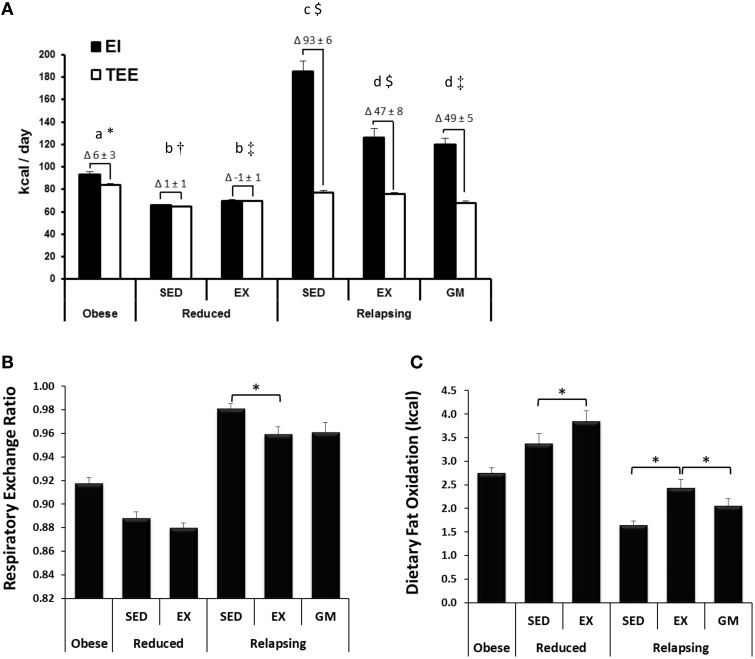Figure 2.
Energy Balance, Respiratory Exchange Ratio, and Whole Body Dietary Fat Oxidation. (A) Energy intake (EI) and total energy expenditure (TEE), as measured by indirect calorimetry on the final day of the study are shown, with the calculated energy imbalance indicated as the Δ above each graph. Obese and relapsing SED and EX rats ate ad libitum. Reduced rats were given an energy balance provision of the diet. Relapsing gap-matched (REL-GM) were given just enough food to match the energy imbalance of the REL-EX group. Groups designated by the same letter (a, b, c, d for EI) or symbol (*, †, ‡, $ for TEE) are not significantly different from one another (P < 0.05). (B) Exercise decreases respiratory exchange ratio (RER) indicating an increase in whole body fat oxidation in relapsing animals. (C) Exercise increases 24 h dietary fat oxidation (measured with a 14C-oleate/palmitate dietary tracer) in both reduced and relapsing animals. Figures were modified or derived from the parent study (Steig et al., 2011).

